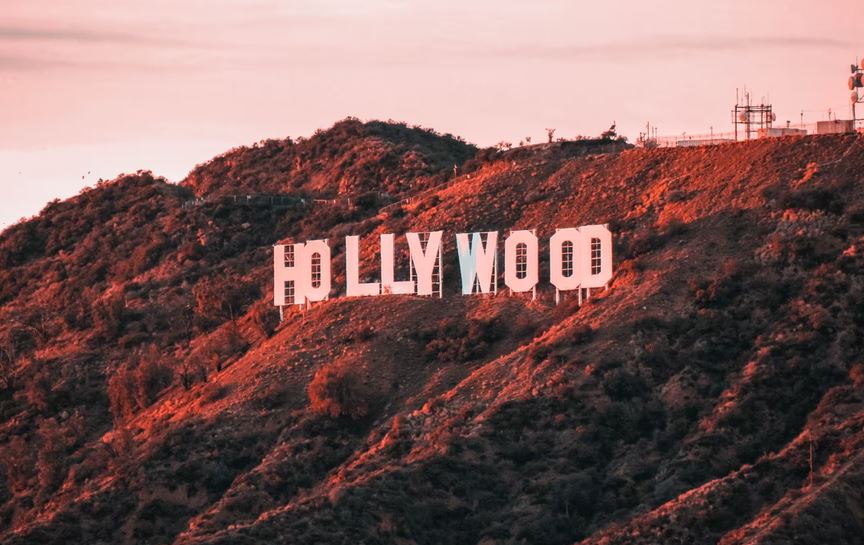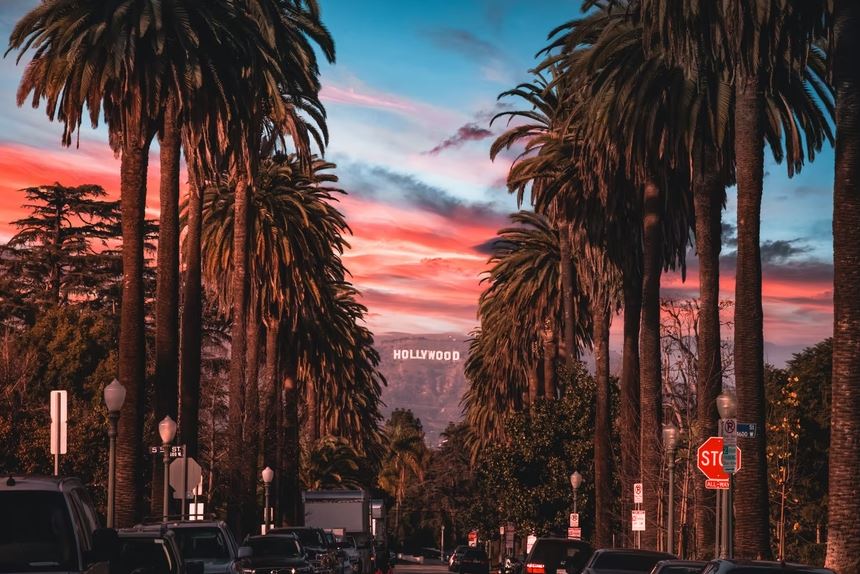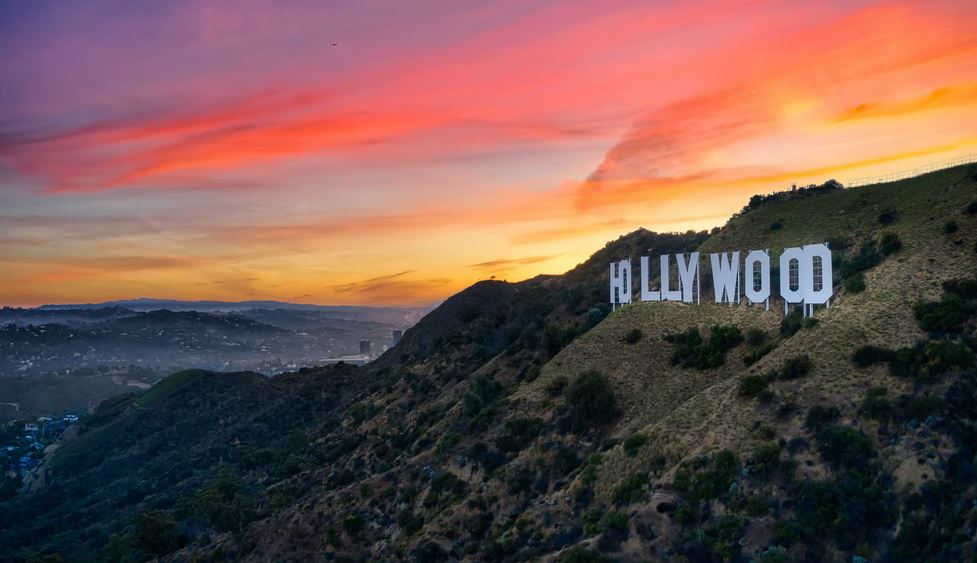Arguably the world’s most iconic sign, nothing can match the glitter and glamor symbolized by the renowned Hollywood sign and its nine white bold letters overlooking Los Angeles, California. Yet, its original purpose wasn’t actually to denote fame and fortune from the film industry but was rather erected as an outdoor real estate ad campaign to sell posh houses. Here, let’s look back at Hollywood’s sign conception, evolution over the years, and how it came to be the famed symbol of the movies and stardom.
A Real Estate Ad
Originally spelled out “HOLLYWOODLAND,” the quintessential California landmark was conceived as a marketing ploy for a newly-developed segregated housing project in the hills above Los Angeles’ Hollywood district. With the Americans officially becoming film crazed by 1915 and the increasing population, a real estate development group, backed by General” Moses H. Sherman, Los Angeles Times publisher Harry Chandler, John D. Roche, and Sidney Woodruff, saw it fitting to expand housing into the hillside.
In March of 1923, the development started selling plots of land, promising a respite to the city jam on the Hollywood side of the hills without the hefty cost. The large sign, essentially a billboard, was only erected several months later.
Crescent Sign Company was contracted to construct the thirteen-letter landmark to what was then an unnamed peak nestling between the San Fernando Valley and Los Angeles basin. Thomas Fisk Goff, the sign company owner, conceived the design. Each letter stood 50 ft (15.2 m) high and stretched 30 ft (9.1 m). 4,000 light bulbs were incorporated into the sign, with the developers were in hopes that those people stuck in heavy traffic will yearn to experience a more carefree life on the hills and prompt them to buy lands in Hollywoodland.
Saving the Sign
The sign was formally dedicated on July 13, 1923, but it wasn’t meant to last forever. With a budget of $21,000, it was only supposed to last for a year and a half. Luckily, the ceaseless ascent of American cinema in Los Angeles during Hollywood’s Golden Age made the sign an international symbol. Thus, it was left standing there.
As it was only meant to stay up temporarily, there was no money left for the sign’s maintenance by 1939. Five years later, the Hollywoodland development also ceased its operations. As such, the sign suffered heavy damage and deterioration, becoming rusted and decrepit. The letter “H” was also completely destroyed and remained that way longer than it should have. An account claimed it was run off by the sign’s caretaker after driving intoxicated. However, the Hollywood Sign Trust disproves the story, saying it was heavy winds that caused the letter to fall over in 1944.
As the sign was only initially intended to be an outdoor ad, few also questioned its long-term significance and permanence to the city. And, by the late 1940s, the sign’s condition had grown progressively worse, the city of Los Angeles deemed it was already a dangerous public nuisance and proposed the fixture to be torn down.
Luckily, the Hollywood Chamber of Commerce stepped in the picture and took over the ownership and maintenance of the sign. They signed a contract with the City of Los Angeles Parks Department for the sign’s repair and rebuilding.
Part of the contract was to remove the suffix “LAND,” and only keep “HOLLYWOOD” to symbolize the district, and ditch the “HOLLYWOODLAND” associated with old housing development. It was then that the Hollywood sign popularly known today was born.
New Life Cut Short
In the 1940s, the newly-signed experienced a rebirth with the continued rise of American cinema. Aside from the flick themselves, memorabilia, and valuable movie posters, the sign also reflected glitz and glamor, appearing in many movies and television shows set around Hollywood.
Being made of thin sheet metals, the sign’s deterioration still continued. By the 1970s, the first letter “O” broke in half, appearing seemingly like a lowercase “u.” Not long after, the third “O” fell down. It didn’t help that the sign was also pranked and vandalized and by the late 1970s, it was back in a miserable state.
The Second Rebirth
In another fortunate event, a man moved forward to save Hollywood and bring back its former glamor and glory. Out of all people, Hugh Hefner, Playboy Magazine’s founder, was the one who started a public campaign aimed to collect funds, not only to repair but replace the dilapidated sign.
Nine individuals donated about US$28,000 to sponsor a letter, namely Terrence Donnelly (publisher), Alice Cooper (singer), Les Kelley (Kelley Blue Book’s founder), Gene Autry (singer), Hugh Hefner, Andy Williams (singer), Giovanni Mazza (producer), Warner Bros. Records, and Dennis Lidtke (entrepreneur). Cooper and Lidtke donated on behalf of Groucho Marx and Matthew Williams, respectively.
The new permanent structure was constructed out of steel, backed by steel columns on a solid, concrete foundation. Each letter was still painted in its signature white color, stood 45 ft (13.7 m) high, and measured 31 to 39 ft (9.4 to 11.9 m) wide. The new sign was unveiled during the 75th anniversary of Hollywood’s cityhood on November 11, 1978.
Hollywood Sign’s Legacy
Today, the Hollywood sign stands tall in the Los Angeles landscape after all the ups and downs, and alterations it has gone through over the decades. Not to mention that it has also undergone various controversies revolving history of suicide attempts and access rights, and became a victim of lots of mischiefs. That’s becoming a symbol of hope, all nearly a century after its intended 18-month run as a real estate ad to becoming the world’s treasured insignia of fame and recognition.
Quick Facts About the Hollywood Sign
1. In 1939, the Hollywood sign went dark with the previous stock market crash and subsequent Depression hampering the real estate industry. With no plots of land sold, Hollywood’s sign illumination became out of priority.
2. On January 1, 1976, the sign spelled “HOLLYWeeD” after Danny Finegood played a prank by hanging curtains to the last two “Os,” causing the sign to be read that way.
3. Hiking to the Hollywood sign is dangerous and illegal. Access is prohibited and the area is heavily-surveyed.
4. Hollywood sign’s security is comparable to Fort Knox. It involves infrared technology, motion sensors, alarms, razor wires, 24-hour monitoring, and helicopter patrols.
5. In 1992, the Hollywood Sign Trust was established for the purpose of caring, maintaining, and promoting the iconic sign.
6. In 1984, the Hollywood sign was lit as part of the celebration of the 1984 Summer Olympics in Los Angeles.
7. The original construction cost of the sign is equal to over $300,000 in 2020 dollars – making it a pretty expensive ad during its time.



